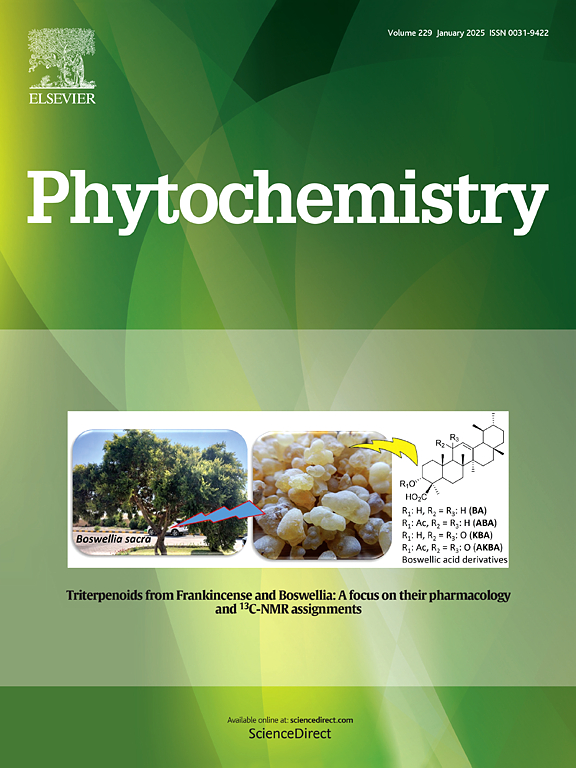Undescribed diterpenes from Euphorbia mauritanica L. as modulators of the breast cancer resistance: Mechanistic and in silico studies
IF 3.2
2区 生物学
Q2 BIOCHEMISTRY & MOLECULAR BIOLOGY
引用次数: 0
Abstract
As part of efforts to identify natural modulators of multi-drug-resistant breast cancer, Euphorbia mauritanica L. chloroform extract yielded four undescribed oxygenated diterpenes, including three nor-ent-abietanes, euphomauritanol C-E (1–3), and one polyacylated jatrophane, euphomauritanolide A (4), along with two knowns, helioscopinolide A (5) and enukokurin (6). The chemical structures and configurations of compounds were established by combination of HRMS, FTIR, and NMR spectroscopic tools along with experimental and calculated TDDFT-ECD. The cytotoxicity evaluation of isolated compounds against the MCF-7ADR revealed 4 and 2 are the most potent with IC50 values of 3.2 ± 0.58 and 4.67 ± 0.29 μM, respectively. Co-administration of compounds 4 and 2 with DOX improved its cytotoxic effect, with a combination index value of 0.41 for 4, indicating a synergistic effect. Mechanistically, 4 modulated DOX anticancer properties via potentiating DOX-induced Go/G1 cell cycle arrest rather than G2M arrest of DOX alone and shifting the cell death of DOX to be mainly apoptotic cell death. Furthermore, 4 alone and combined with DOX showed promising anti-migratory effects against MCF-7ADR. In conclusion, 4 showed promising co-chemotherapeutic effects to the DOX against MCF-7ADR, indicating that this compound possesses potential as an auspicious lead chemical to target breast cancer cells resistant to doxorubicin.

求助全文
约1分钟内获得全文
求助全文
来源期刊

Phytochemistry
生物-植物科学
CiteScore
6.40
自引率
7.90%
发文量
443
审稿时长
39 days
期刊介绍:
Phytochemistry is a leading international journal publishing studies of plant chemistry, biochemistry, molecular biology and genetics, structure and bioactivities of phytochemicals, including ''-omics'' and bioinformatics/computational biology approaches. Phytochemistry is a primary source for papers dealing with phytochemicals, especially reports concerning their biosynthesis, regulation, and biological properties both in planta and as bioactive principles. Articles are published online as soon as possible as Articles-in-Press and in 12 volumes per year. Occasional topic-focussed special issues are published composed of papers from invited authors.
 求助内容:
求助内容: 应助结果提醒方式:
应助结果提醒方式:


